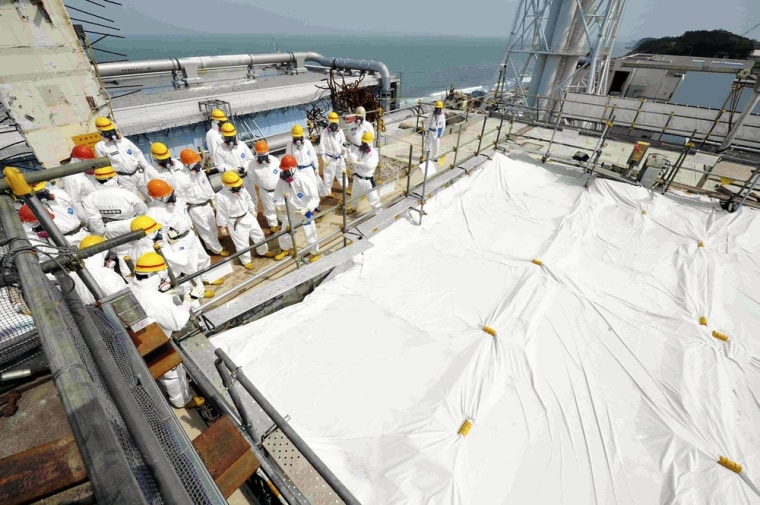
FUKUSHIMA, Japan -- Amid concerns of a new disaster should a quake destroy the pool cooling off radioactive nuclear fuel rods at Fukushima's Reactor No. 4, Japan on Saturday arranged a tour for journalists and declared the situation manageable -- but also very long term.
"I don't think the situation is unstable," said Goshi Hosono, Japan's environment minister and the man in charge of the cleanup. He was speaking to reporters after his first tour of the twisted and partly destroyed building that houses the reactor.
Hosono said he expected workers to begin removing fuel from the reactor's storage pool next year.
Work began last month to raise what amounts to a giant tent over the building to keep radioactive dust from scattering during the transport of the fuel rods, which now are under just a tarp at the top of the building.
Hosono said his biggest concern was ensuring Japan could secure the labor and talent to finish the decommissioning of the Fukushima reactors over the coming decades.
"This may take 30 or even 40 years to complete and extremely difficult work is still ahead of us," he said.
Tokyo Electric Power, the utility that operates the Fukushima Daiichi plant, says its analysis shows the No. 4 reactor building would hold up in a strong earthquake even after being badly damaged by a hydrogen explosion when three nearby reactors suffered meltdowns in March 2011.
Japanese safety regulators on Friday ordered Tepco to recheck its findings after measurements showed the west wall of the reactor building was buckling out by about 1.2 inches.
Some experts believe the fuel in the pool is now too weak to generate much radioactivity, but others are still worried.
"The No. 4 reactor is visibly damaged and in a fragile state, down to the floor that holds the spent fuel pool," Hiroaki Koide, an assistant professor at Kyoto University’s Research Reactor Institute, told the New York Times. "Any radioactive release could be huge and go directly into the environment."
Hosono said the government accepted Tepco's estimate that the No. 4 reactor could withstand an earthquake measuring a "strong 6" on the Japanese scale.
The magnitude 9 quake last March that triggered a tsunami and overran Fukushima's backup power systems was measured at 7 on the Japanese scale.
Some environmental critics charge the No. 4 reactor presents a particular risk of a knock-on disaster if a subsequent earthquake were to topple it or puncture its fuel storage pool and allow the 65 feet of water now covering and cooling 1,535 uranium fuel assemblies to drain away.
Such an accident, they say, could release far more radiation than the leaks of radioactive water Tepco has battled since improvising a system for cooling reactor cores last year.
Hosono climbed a narrow and dark staircase built with scaffolding to take reporters to the top of the No. 4 building where the fuel pool has been covered with a tarp.
Tepco has taken steps to shore up support for the pool, which measures 30 feet by 60 feet across, by adding a cement column underneath.
Officials from the utility demonstrated how they were using water in the pool as a kind of level to confirm the building was not tipping. They also showed a grid of floats holding up the tarp they said could support a person if a worker fell in.
Reuters contributed to this report.
More world news from msnbc.com and NBC News:
- Scotland launches independence campaign with 007's support
- Runoff could take Egypt's voters on one of two very different paths
- Leftist tipped to be next Greek leader warns of 'Cold War' over austerity
- Japan's fugitive penguin caught after two months on the lam
- Why so glum? Germans struggle to find joy, poll suggests
- Tens of thousands of elephants likely killed last year, experts say
Follow us on Twitter: @msnbc_world